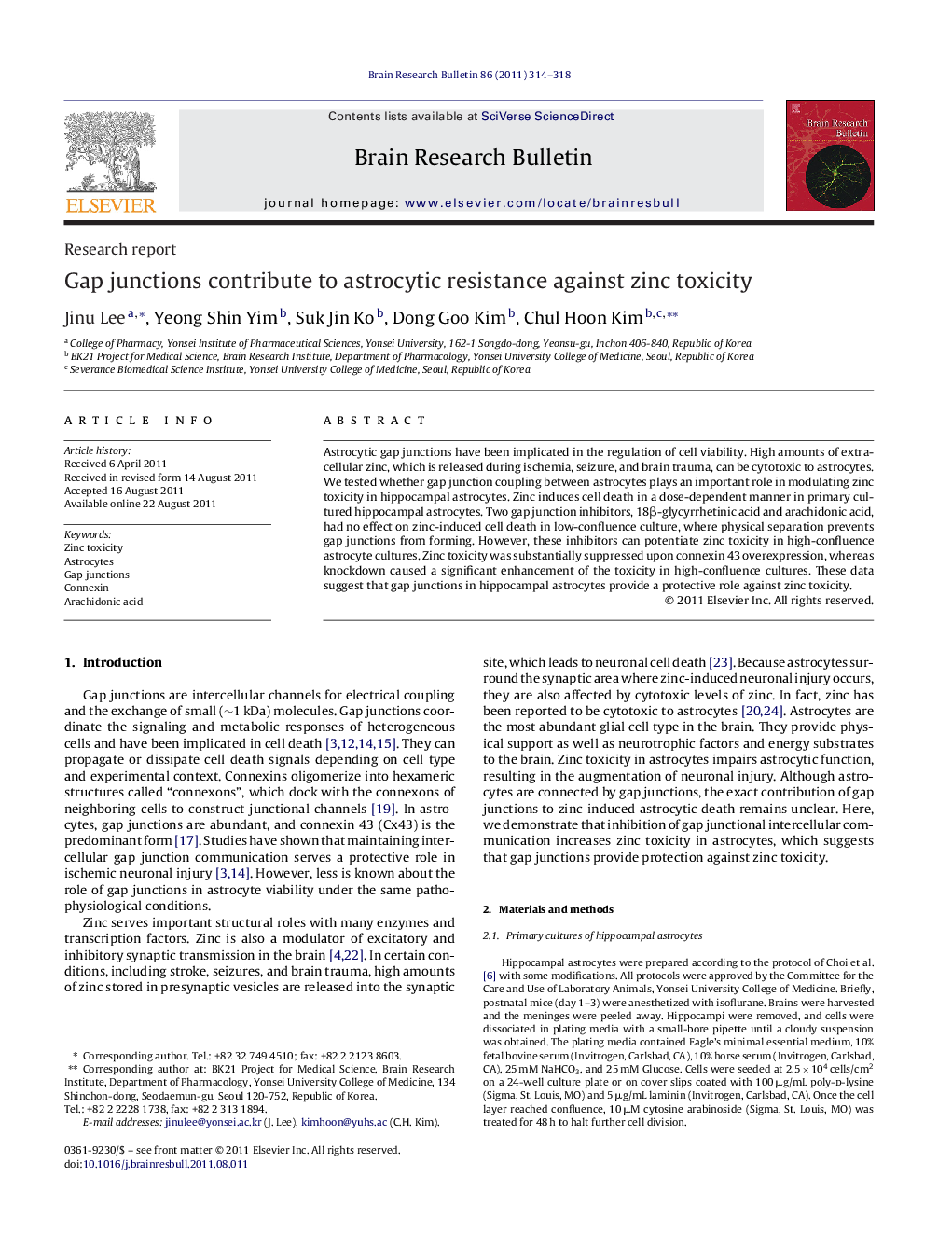| Article ID | Journal | Published Year | Pages | File Type |
|---|---|---|---|---|
| 6262033 | Brain Research Bulletin | 2011 | 5 Pages |
Astrocytic gap junctions have been implicated in the regulation of cell viability. High amounts of extracellular zinc, which is released during ischemia, seizure, and brain trauma, can be cytotoxic to astrocytes. We tested whether gap junction coupling between astrocytes plays an important role in modulating zinc toxicity in hippocampal astrocytes. Zinc induces cell death in a dose-dependent manner in primary cultured hippocampal astrocytes. Two gap junction inhibitors, 18β-glycyrrhetinic acid and arachidonic acid, had no effect on zinc-induced cell death in low-confluence culture, where physical separation prevents gap junctions from forming. However, these inhibitors can potentiate zinc toxicity in high-confluence astrocyte cultures. Zinc toxicity was substantially suppressed upon connexin 43 overexpression, whereas knockdown caused a significant enhancement of the toxicity in high-confluence cultures. These data suggest that gap junctions in hippocampal astrocytes provide a protective role against zinc toxicity.
⺠Zinc induces cell death in primary cultured hippocampal astrocytes. ⺠Cell confluence of astrocytes is a contributing factor of vulnerability to zinc. ⺠Gap junction inhibition potentiates zinc toxicity in high-density astrocytes cultures.
